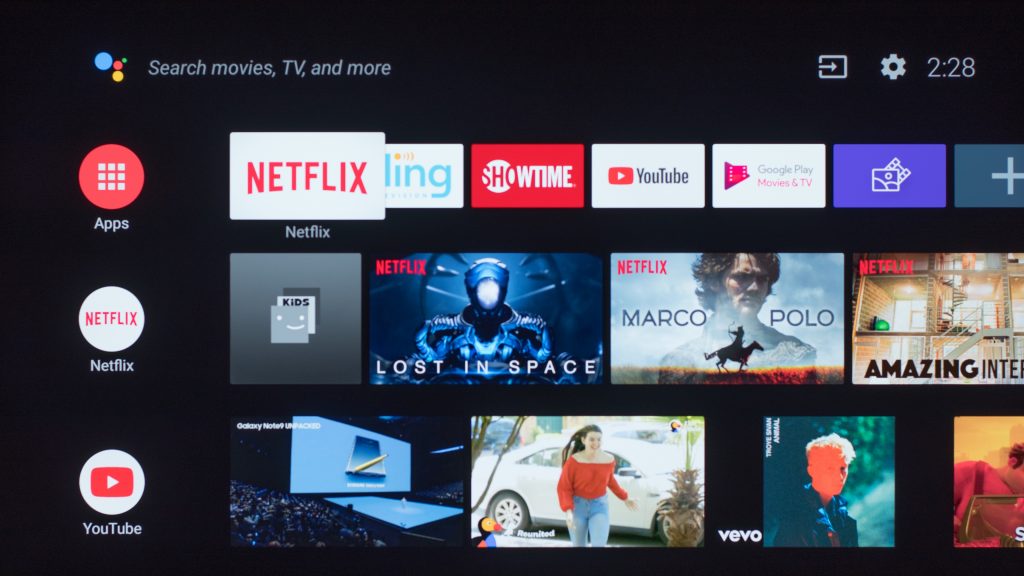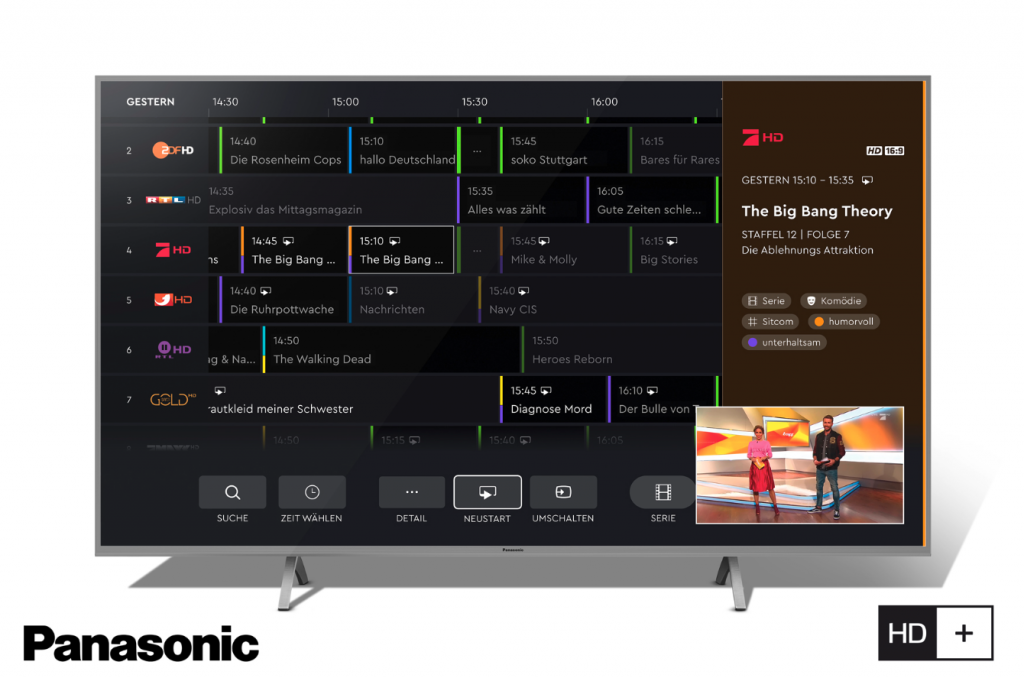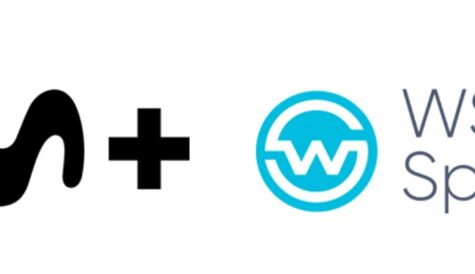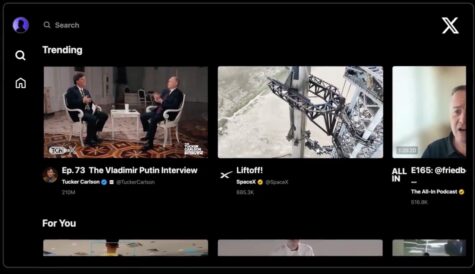The race to OTT
 The OTT market is predicted to be worth US$159 billion by 2024, according to Digital TV Research, and operators do not want to miss out on a slice of the pie. Jonathan Easton speaks to vendors in the space about the strategies operators should implement in order to launch a streaming product that builds on their brand and stands the test of time.
The OTT market is predicted to be worth US$159 billion by 2024, according to Digital TV Research, and operators do not want to miss out on a slice of the pie. Jonathan Easton speaks to vendors in the space about the strategies operators should implement in order to launch a streaming product that builds on their brand and stands the test of time.
Unsurprisingly, OTT was a central theme of IBC 2019. Whether it was operators discussing the merits of different pricing models or vendors promoting the merits of AI-enriched content delivery networks, OTT was on the tip of tongues all around the RAI. What is increasingly apparent is that OTT offerings are no longer an exceptional add-on to an operator’s main service; they are the norm – and those who lack any form of OTT product are going to fall behind in the near future.
“Consumers don’t watch TV like they used to and pay TV operators know it,” says Marco Frattolin, senior product manager in charge of operator products at OTT platform provider Vewd. “Not only are they watching traditional TV in new ways – multiscreen, multitasking, non-linear – but they are watching OTT content at a growing rate, challenging operators with enabling both in a consistent and easy-to-use way.”
These sentiments are shared by Magine’s Håkan Tranvik, who agrees that “consumer behaviour is radically changing and this means that traditional operators need to adapt.”
This consumer behaviour has, of course, been shaped and informed by the unprecedented growth of Netflix.
With the wealth of options from the so-called ‘big five’– Netflix, Amazon Prime Video, along with the imminently arriving Disney+, Apple TV+ and HBO Max – it is no wonder that a recent study from Roku anticipates that 60 million American households will view video exclusively through streaming in the next five years.
But though the likely market leaders have been identified, there will still be room for alternative providers.
“Right now, there is a land grab for market share. Various researchers say Netflix, Amazon, and Disney+ will make up a minority of the subscriber market share in 2023 with the bulk of the pie split between China and ‘others’,” says Brightcove product marketing manager Lexie Knauer. “The ‘others’ piece is what is at stake. There is a rush to capture the remaining market share. There are only so many more cords left to be cut, and content distributors need to ensure they have a unique value proposition, whether that’s niche, specialised content, or a superior viewing experience. Otherwise, they won’t survive in the fragmented marketplace, risking churn and abandonment to other services.”
Saying that it offering an OTT service is make-or-break right now would be to exaggerate, but operators do risk being left behind and should lean on their pre-existing customer relationships, says Frattolin: “Customer relationships are at risk. Currently, operators have a great opportunity to position themselves between the consumer and the OTT streaming providers by offering more of the services consumers demand.”
Good-quality E2E solutions should both be flexible and yet should also provide a quicker time to market.
Simon Leadlay, You.i TV
One way that operators can bridge that gap without investing heavily in a large-scale platform of their own is to take advantage of a trend towards aggregation, adds Frattolin: “OTT channelisation means that there will be more and more OTT services available with different content, so consumers will need an aggregation layer, and that’s the operator opportunity.”
You.i TV head of product market development Simon Leadlay has a similar mindset: “Operators who get left behind will struggle with a fragmented subscriber base, will not be able to show a high enough value in their service due to limitations on consumer device support, and will lose customers to more-attractive platforms who bring a better service to a wider range of devices.”
Taking an approach
It is one thing for operators to acknowledge a need to break into the space, but there is no one-size-fits-all approach – both in terms of technology and content.
“Operators need to move fast with a flexible approach. This is a play where larger tier-one operators have an advantage, using their own muscle to invest in platforms and exclusive content. At the same time they have old legacy in their systems and technology changes in their platforms are very costly,” says Tranvik. “For the tier-two and three operators, the situation is different. They need to be smart and build their OTT position in a more cost-efficient way with minimised capital expenditure and the potential to adjust in an agile fashion.”
There certainly is pressure on content service providers to present an OTT offer, but in order to avoid creating a product with a high churn they must have the right approach, says Knauer. “It’s imperative that operators have a well-defined launch plan. From content strategy to promotional activities, preparation is key,” she says. “Depending on how quickly an operator is looking to launch, it should investigate working with a technology partner that offers an easy to manage templated approach. Moreso, working with a strategic partner that has strong relationships with distribution platforms can really speed up the app submission process to get the service across the finish line.”
As far as technological partners for OTT development goes, there is no lack of options on the market, with many hawking their wares in the RAI.
Each vendor offers differentiated products and provides various degrees of hand-holding, but there are undoubtedly unifying aspects across the market to serve operators’ needs.
“Good-quality E2E solutions should be both flexible and yet should also provide a quicker time to market. In a traditional E2E solution, a great deal of time is unfortunately spent customising the user-interface for deployment, which spoils the benefit of a pre-integrated solution,” says Leadley. “Operators are now looking to accelerate and simplify this UI customisation process, all while refusing to take just a locked-in templated solution. They are looking for tools and technologies that offer solutions to cross-platform app and service development, both to speed initial development and also to reduce ongoing maintenance and feature development costs.”
 Identifying and avoiding pain points
Identifying and avoiding pain points
So far, so simple, it would seem. Get content in place, pick a platform provider and launch across smartphones and smart TVs across the region.
However, there are plenty of issues surrounding the deployment of an OTT service that operators should consider.
“Most operator product owners would love to see their service deployed as widely as possible,” says Leadley. “But without a unifying technology stack, they suffer the pain of multiple code bases and mismatched per-platform feature sets. This greatly impacts an operator’s ability to reach their entire viewership and inevitably reduces their launch ambitions and service availability.”
What starts as an ambition to launch one app that is accessible across multiple devices can quickly lead to the creation of multiple internal teams responsible for different platforms. It is not uncommon for operators to have platform-specific teams, one vendor commented at IBC.
This then can result in poor resource management, and the service ultimately becoming a patchwork of incrementally implemented bug fixes and patches rather than a unified platform with a clear editorial drive.
The focus on multi-platform interoperability is a concern that most vendors are well aware of, Tranvik confirms.
“To make a functional OTT service you will need to build a multi-platform solution,” he says. “If not using a managed template service this means costly upgrades and it can be time consuming to align the user experience.”
One solution for this, Knauer suggests, is a SaaS-based OTT video management and publishing system that “uses template-based designs for live and on-demand video”. Such an approach, the Brightcove manager points out, “is much easier to manage across an organisation and doesn’t require engineering resources”.
“It also eliminates the complexity of maintaining custom development work,” she adds.
Leadley promotes a similar approach. “Operators should take control of their front-end technology stack and follow the best practices that have previously been demonstrated by both the video game industry and by OTT leaders such as Netflix,” he says. “Choose a single rendering engine which is capable of running on every device, and then develop a single unified code base which allows your service to run everywhere. The alternative common practice of developing multiple different apps, one per platform, is simply not sustainable or affordable in a world of increasing device fragmentation and consumer choice.”
It is no small task to launch an OTT product, but such services are growing in number and are only going to become more central to the consumer experience of TV.
While millennials are known in the industry for driving the rate of cord-cutting, generation Z – those born in the late 90s and early 2000s – are likely to be cord-nevers. It will be some time until this latter group becomes the primary purchasing generation globally, but operators must start to plan for a future where the majority have been raised on a steady viewing diet of Snapchat, Netflix and YouTube.
With that OTT market only going to get more congested and contested, time is of the essence. But instead of rushing out a half-baked product, operators need to create a solution for now that can carry them into the future.
HbbTV OpApp: operator services without a set-top
HbbTV, the hybrid broadcast-broadband TV standard widely used in Europe, has extended its reach into OTT recently via the OpApp specification. This has changed the game for service providers, allowing them to save on physical set-top box design, manufacture and truck rolls.
In the grand scheme of things this is still early days for this technology, but it is starting to have an impact.
“When you look at what Panasonic and Samsung have rolled out this year, really integrating OpApp into their smart TVs, you can get an idea of where the industry can take this,” says Brightcove product marketing manager Lexie Knauer. “No requirement for a set-top box, CI module or smartcard. That’s a pretty big deal in itself.”
But OpApp does not just provide a cost-saving benefit to the operator, Knauer says. “For consumers, it keeps things simple,” she adds. “The user-interface is one that’s familiar and easy to use. From a simple aesthetics standpoint, an OpApp can replace a set-top box, meaning consumers don’t need to worry about running cables and finding a place for another device. It also means not requiring an additional remote. It just makes things easier.”
The benefits are clear to be seen, but there are few case studies on the market to prove the viability of the product.
March 2019 saw satellite operator SES launch a version of its German platform HD+ using OpApp and the company is particularly keen on seeing how the technology develops.
“The direct integration eliminates the entry barriers for the use of HD, UHD and non-linear offers. We are playing in a whole new league now regarding convenience and simplicity,” said Alexander Sacher, VP product and solutions development media platform at SES and CTO of HD+ when the OpApp was launched.
He continued: “Our new offering is far more than just an additional option of receiving HD+. It might even stimulate the German TV market, high-definition television and the parallel use of linear and non-linear television.”
However, while HbbTV OpApp might seem a more affordable and straightforward option than traditional broadcast, it is still worth noting that many emerging parts of the world are still lacking internet speeds required. A report from SES pointed out that the standard for effectively streaming SD video is a download speed of 3Mbps, requiring an average download speed in the order of 5Mbps and that only seven sub-Saharan African countries have the infrastructure set up required. In these parts of the world, it might be some time before IPTV is able to dislodge satellite.




